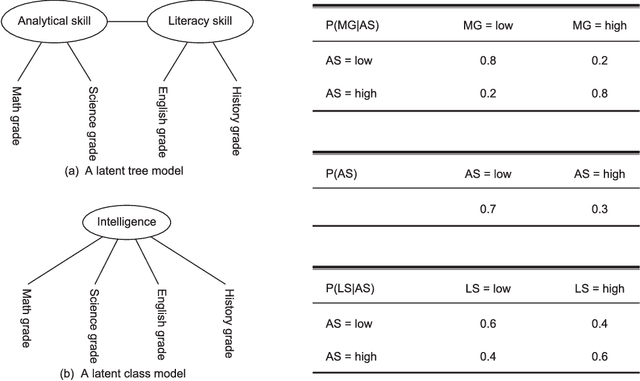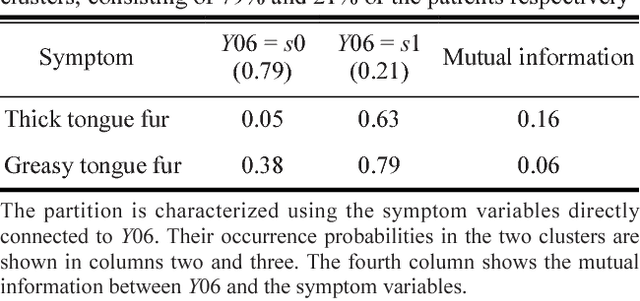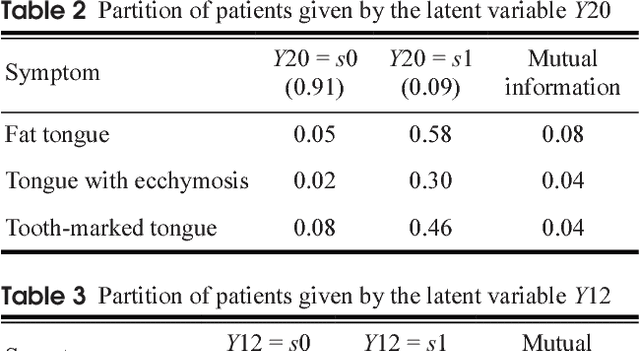Pei Xian Chen
A data-driven method for syndrome type identification and classification in traditional Chinese medicine
Feb 24, 2016



Abstract:Objective: The efficacy of traditional Chinese medicine (TCM) treatments for Western medicine (WM) diseases relies heavily on the proper classification of patients into TCM syndrome types. We develop a data-driven method for solving the classification problem, where syndrome types are identified and quantified based on patterns detected in unlabeled symptom survey data. Method: Latent class analysis (LCA) has been applied in WM research to solve a similar problem, i.e., to identify subtypes of a patient population in the absence of a gold standard. A widely known weakness of LCA is that it makes an unrealistically strong independence assumption. We relax the assumption by first detecting symptom co-occurrence patterns from survey data and use those patterns instead of the symptoms as features for LCA. Results: The result of the investigation is a six-step method: Data collection, symptom co-occurrence pattern discovery, pattern interpretation, syndrome identification, syndrome type identification, and syndrome type classification. A software package called Lantern is developed to support the application of the method. The method is illustrated using a data set on Vascular Mild Cognitive Impairment (VMCI). Conclusions: A data-driven method for TCM syndrome identification and classification is presented. The method can be used to answer the following questions about a Western medicine disease: What TCM syndrome types are there among the patients with the disease? What is the prevalence of each syndrome type? What are the statistical characteristics of each syndrome type in terms of occurrence of symptoms? How can we determine the syndrome type(s) of a patient?
 Add to Chrome
Add to Chrome Add to Firefox
Add to Firefox Add to Edge
Add to Edge